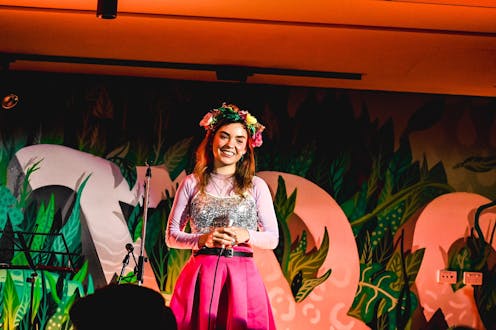
I am blind and autistic. Like many people who grew up experiencing the world differently to mainstream Australians, I was thrilled last Thursday to read Black Inc.’s announcement of a new anthology, to be edited by Osher Gunsberg: “Growing up Neurodivergent in Australia: Call for submissions.”
Finally, I thought, after 25 years of the neurodiversity movement, founded by Australian sociologist Judy Singer, its birth country would have an anthology representing the range of our experiences.
But I was dismayed to read, in the first paragraph of the callout, that contributors were required to “have been diagnosed as neurodivergent”. This might sound like a reasonable request, but it fails to account for what the neurodivergent community is, what diagnosis is, and what has been expected of previous contributors to the Growing Up series.
Why diagnosis is a problem
Neurodivergent people, many of them autistic, questioned the framing and language of Black Inc.’s callout, and asked it to reconsider the requirement for a diagnosis. The publisher replied:
In the interests of protecting those who are yet to seek intervention, and to be ethically responsible in how we present this issue – we are only inviting submissions from people with a medical diagnosis.
There was an outcry in response. Radio personality Em Rusciano, diagnosed with ADHD and autism, wrote on Twitter:
Getting diagnosed is nearly impossible atm. Most of us grew up ND [neurodivergent] in Australia without even realising we were until we figure it out as adults. Self diagnosis is totally valid… Do better.
Two days later, Black Inc. published a statement apologising for the pain it had caused, but continuing to use the same framing and language regarding neurodiversity, and not changing its position on diagnosis.
The project is now on hold, while the publisher is “considering all the issues”.
Black Inc.’s shift to requiring proof of identity should be of concern to all writers. We write to tell our stories of various identities, and when we submit them under nonfiction, we are labelling them as our truth. A submission process that requires proof of identity demands evidence that often does not or cannot exist.
Read more: Real-life autism disclosures are complex – and reactions can range from dismissal to celebration
‘A tool of inclusion’
Of course, there is no specific “neurodivergent” diagnosis, although neurodivergence covers a range of conditions that can be diagnosed, including autism, ADHD, bipolar, epilepsy, obsessive-compulsive disorder (OCD), schizophrenia and Tourette syndrome.
But the neurodiversity movement, which embraces a social model of disability over the medical model, is specifically against requiring a neurodivergent person to have a diagnosis of any kind.
Kassiane Asasumasu, who coined the term “neurodivergent”, has written:
It is not another damn tool of exclusion. It is specifically a tool of inclusion.
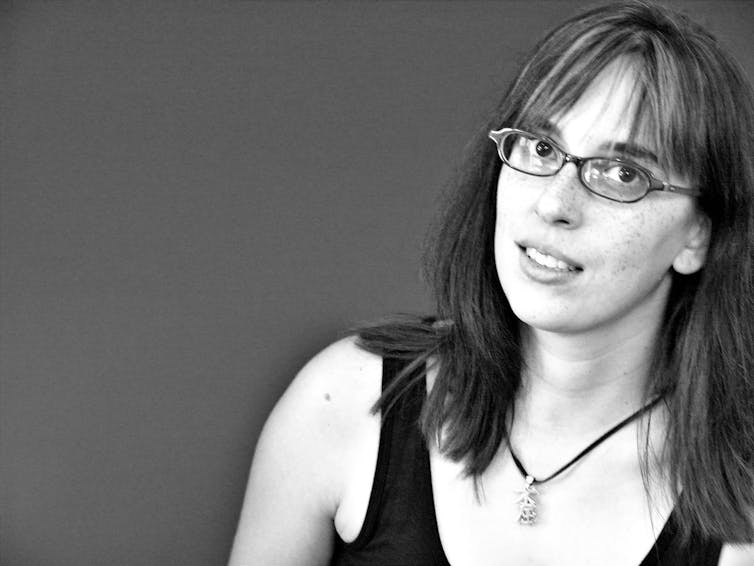
A diagnosis requirement would make many neurodivergent people ineligible to submit their story. Diagnoses are prohibitively expensive for many: current estimates for the cost of an autism diagnosis in Australia, for instance, range from $1,000 to $8,000.
And while things are changing, the diagnostic tools for conditions like autism and ADHD have often failed to recognise those who fall outside the long-typical presentation of an otherwise non-disabled white male child.
What is neurodiversity?
The word “neurodiversity” was born in the 1998 sociology Honours thesis of Judy Singer, a student at University of Technology Sydney.
She was drawn to sociology after learning about the history of classifying human differences according to how compatible or otherwise they might be with industrial production, and how the medical profession gained its power through being the arbiter of who was or was not productive.
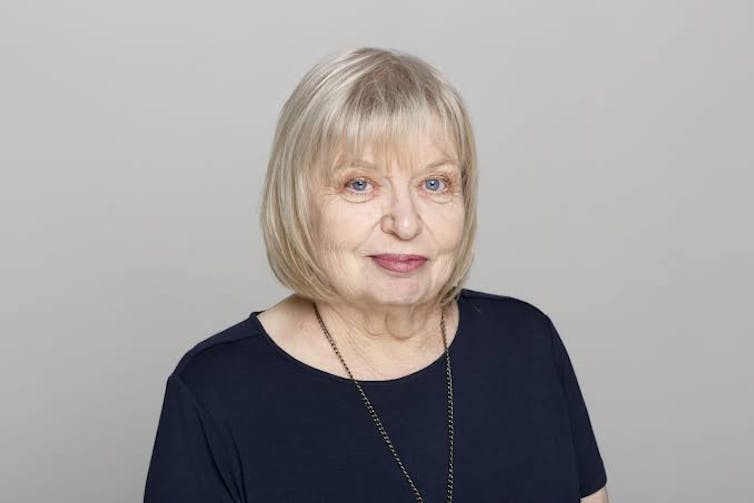
She learned of a group of physically impaired UK activists who challenged this medical model with a social model of disability. The social model argues that the way an environment is constructed privileges those who are classified as “normal”, while disabling those classified as “abnormal”.
For example, stairs are more common than ramps or elevators because more people walk than use wheelchairs – so wheelchair users are disabled in terms of accessing buildings with stairs because they are not built to accommodate them, but to accommodate people who walk. Singer discovered the social model was foundational to the academic discipline of disability studies, and enrolled in this degree to learn more.
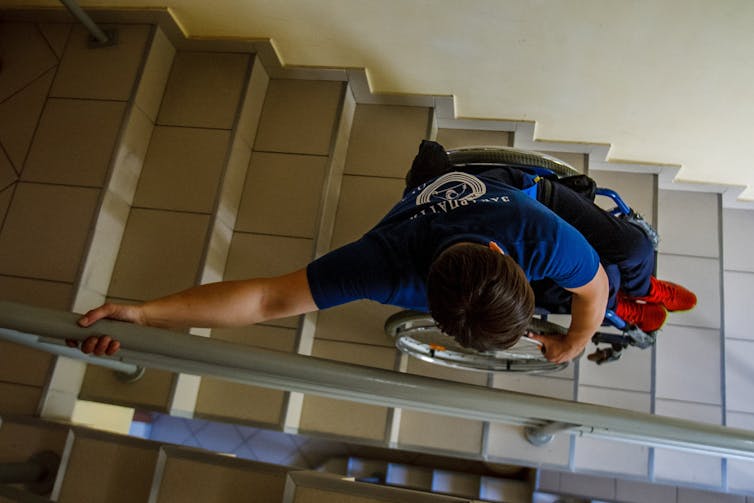
At the same time, Singer’s baby daughter was developing differently to other children her age. Singer was searching for an explanation when she read about autistic scientist and author Temple Grandin, and recognised her daughter’s characteristics. This led Singer to realise she and her mother were also autistic. There were few people in Australia she could discuss her situation with.
On the internet, which was just then beginning to expand beyond university walls, she discovered a world of people like her. All of them had stumbled through a maze of misdiagnosis and social isolation to finally find each other. So often, they’d been told they and their experiences of the world were “weird” and wrong. Accepting each other’s self-descriptions was key to this community.
Together they designed a future that did not exclude them from society. They created the term “neurotypical” to refer to those whose brains function in typical ways, leading them to instinctively communicate in ways society classified as normal. They referred to themselves as “autistics and cousins”.
Recognising the importance of this moment in history, Singer wanted to document the movement and its implications. To her, the most important of these implications was that humanity was constituted by a range of neurotypes, all of them vital for its survival.
Understanding humans as one element of Earth’s biodiversity, she coined the term “neurodiversity” to refer to this variety of minds. Neurodiversity is not simply a characteristic of humankind, she argued, but essential to its survival.
‘Truly revolutionary’
As the term “neurodiversity” became known beyond their online community, it was clear a similarly compact way to refer to “autistics and cousins” was needed. So Hapa and Asian American autistic activist Kassiane Asasumasu invented the term “neurodivergent”, to refer to people whose brains diverge from the typical.
Singer’s thesis has been truly revolutionary for the neurodivergent community. It has positively transformed the way many neurodivergent people understand themselves: allowing them to find their kin, to understand their worth, and to live the kind of lives the medical model - which framed their characteristics in terms of deficits - told them was impossible.
As a result of neurodivergent people who have concentrated on their strengths while working to transcend the limits of a world not designed for them, Australia is known for Hannah Gadsby’s groundbreaking comedy, Grace Tame’s work to support survivors of sexual abuse, and Chloe Hayden’s acting.
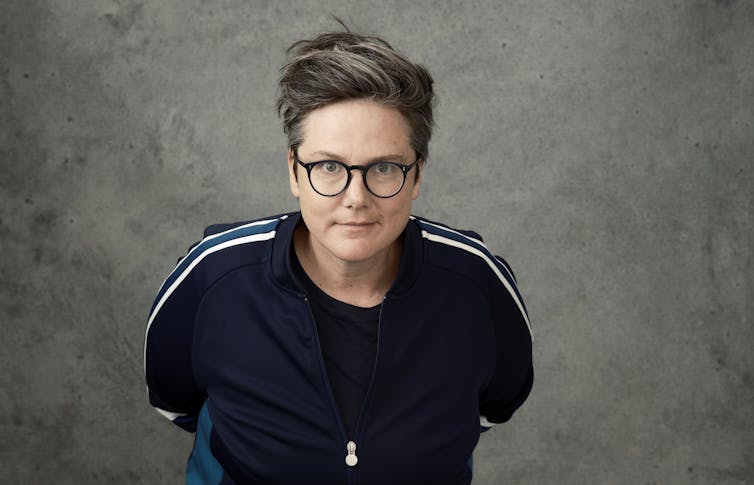
Read more: Hannah Gadsby navigates the mirror maze of trauma as an autistic, gender queer comedian
Why diagnosis isn’t simple – or available to all
“Neurodivergent” is a proudly nonscientific identifier. The neurodivergent community welcomes people who experience the world atypically – and does not base membership on the medical labels people do or do not have.
Therefore, to require a neurodivergent person to have a diagnosis directly contradicts the community’s foundations. It also ignores the many difficulties and complications involved in seeking a diagnosis.
Diagnosis is of course necessary to be prescribed medication, or when applying for NDIS assistance. However, if you need medication or NDIS assistance, you will not be given a diagnosis of “neurodivergent”. You will be given one or more medical labels, such as autism, dyslexia, epilepsy or Tourette syndrome.
These medical labels are not as conclusive as they may seem. There is not a blood test for autism. People can be diagnosed with epilepsy even with a normal EEG and MRI. Many neurological medical conditions are diagnosed entirely on the basis of questionnaires and self-reported medical history.
And what each medical label encompasses changes over time. This is why the Diagnostic and Statistical Manual (DSM) is continually debated and regularly updated.
For example, autism was originally described as a form of childhood schizophrenia, and only became its own diagnosis in 1980. In 1994, autism was divided into so-called low-functioning “autism” and so-called high-functioning “Asperger’s Syndrome”. In 2013, Asperger’s Syndrome was retired as a term, and folded back into “autism”.
An increasing number of conditions, including autism and ADHD, have been revealed to be based on disablist, racist and sexist stereotypes, leading to misdiagnosis and underdiagnosis.
Seeking a diagnosis engulfs your life. This is not hyperbole. It is time-consuming, traumatising, exhausting and expensive. It involves waiting lists, multiple assessments, multiple specialists, and a lot of travel. And, particularly if you are from one or more of the groups that are frequently misdiagnosed and underdiagnosed, such as women or First Nations people, you may have to endure it several times over. The only shortcut through this process in Australia is wealth.
Proof of identity
When neurodivergent people began to explain to Black Inc. why their requirement for diagnosis was unacceptable, disabled activist Carly Findlay was quick to support us. When she was editor of Growing up Disabled in Australia, and when she contributed to Growing up African in Australia, proof of identity was not required.
Where it does exist, proof of identity will always be vulnerable to accusations of inadequacy. And when it puts vulnerable people at risk when their private medical information is stored by organisations and companies who might not be equipped to manage it safely.
Many neurodivergent people avoid diagnostic labels so as to avoid discrimination. This happens to diagnosed people in many aspects of their lives, including getting an education, getting a job, accessing healthcare and health insurance, signing contracts, and moving to or from Australia.
An absence of proof of course makes it possible for situations such as the 1995 Miles Franklin award, where Helen Demidenko faked a Ukrainian identity, to occur. But this is rare. I do not want to minimise the pain one fake causes a whole community. I want to argue that a whole community should not be punished because of the rare fake.
Nevertheless, Black Inc.’s bad example has been a reminder both of the strengths of the neurodivergent community, and the allies who respect our history and culture. This has resulted in a burst of creativity, including three neurodivergent anthologies in the works that I know of – all committed to the principles of neurodiversity.
Amanda Tink does not work for, consult, own shares in or receive funding from any company or organisation that would benefit from this article, and has disclosed no relevant affiliations beyond their academic appointment.
This article was originally published on The Conversation. Read the original article.







